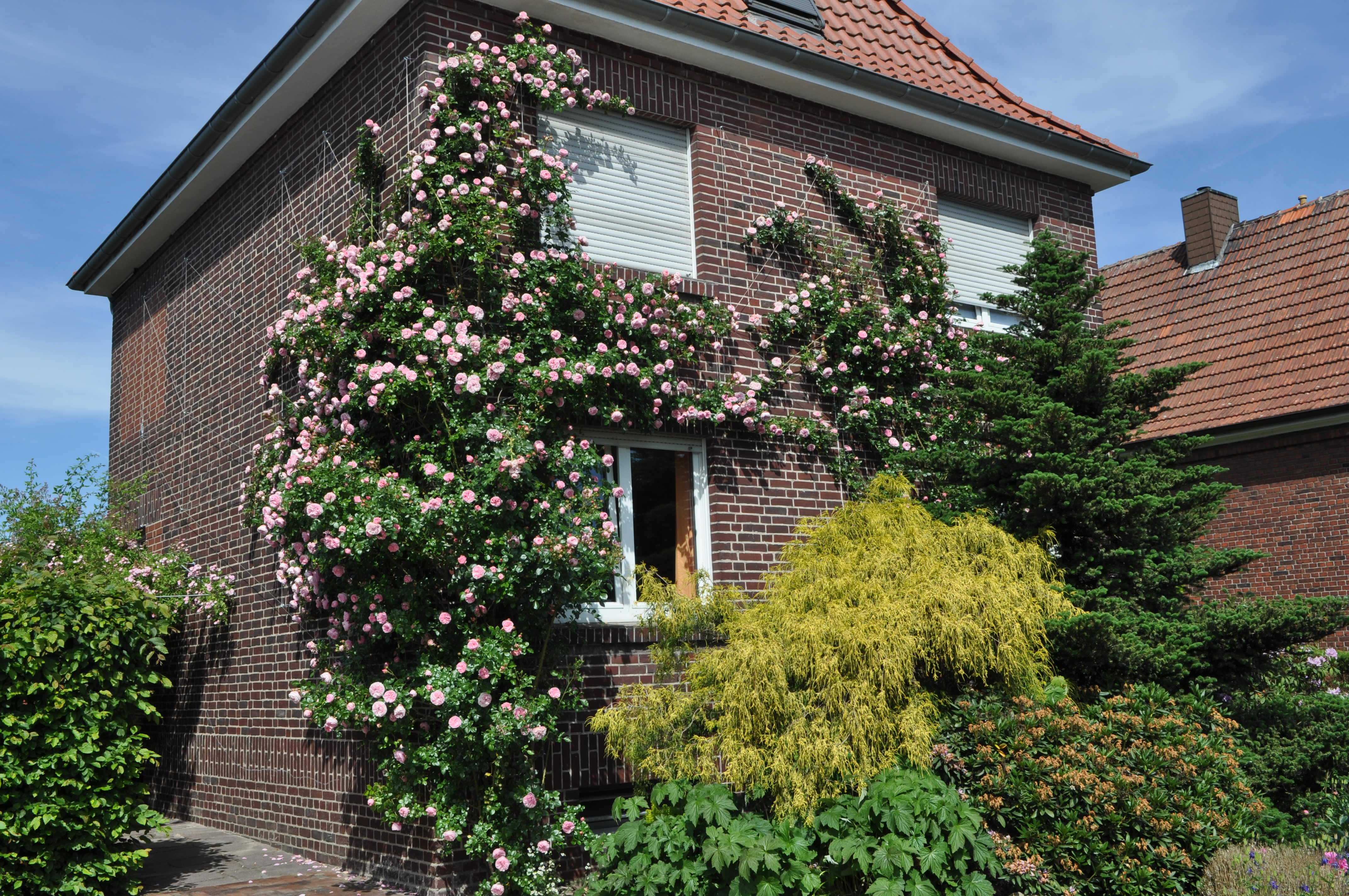You want to better adapt your garden to the new climate requirements? Then you could for example
- Collect rainwater: Retailers now offer a wide range of really presentable collection tanks. These tanks, fed via gutters from house, garage or carport roofs, catch the often short-lived, sometimes heavy, rain downpours. However, the amounts of water that accumulate over these large areas in a very short time are considerable! This saves you money on tap water, and your plants tolerate rainwater better anyway, because it is softer and contains no additives.
- Mulching: A thick layer of organic material (e.g., bark mulch, plucked wild weeds, prunings from shrubs) reduces evaporation and also contributes to soil improvement through humus formation due to slow decomposition. In addition, roots are protected from direct sunlight and undesirable wild weed growth is suppressed. As a result, less weeding and watering is required.
- Planting trees: In addition to providing very pleasant shade, trees also provide refuge and nesting opportunities for birds. And if you choose a fruit and/or nut tree, the tree will also provide you with its fruit "on the house". Especially heat-loving trees, which originally come from the Mediterranean region, such as sweet chestnut ( a great bee pasture) or walnut are now at their peak.
--> Some cities and communities give away trees to house owners (e.g. the city of Saarlouis). Ask your community, perhaps there is also in your neighborhood the possibility to get a tree at a reasonable price.

- Greening of facades: There are many ways to green the walls of houses. Climbing roses, if desired in combination with other climbing plants, also make great landscaping for the facades of houses, sheds or garages. The greened walls can help better regulate temperatures in the building, so less heating or ventilation is needed. They also provide shelter for birds. But that's not all, because they also trap fine dust and Co2, provide oxygen and increase humidity in the environment. And the foliage can reduce noise.
- Do not remove wild weeds: ground-covering wild weeds such as groundsel can be tolerated as long as they are not in direct competition with the crop plants. This also slows soil evaporation and improves soil structure. Many of the wild herbs are very valuable to the highly endangered insect world, for example, some butterflies require very specific type of host plants to survive. The leaves of the nettle are even the only food source for the caterpillars of some butterflies (including the admiral, peacock butterfly or small fox). And if the stinging nettle ever spreads too far, the leaves and stems can be turned into a valuable liquid manure.
More and more gardening enthusiasts now allow a certain amount of wild growth, which benefits insects and birds, and incidentally makes the soil more receptive to heavy rainfalls. And some wild herbs are even healthy and nutritious for humans, such as goutweed and dandelion.
The Internet has a lot more exciting information about these topics. We think it's a lot of fun to learn about these complex natural processes. Perhaps you have now also got the desire to try out one or the other? In any case, we hope you enjoy it!
